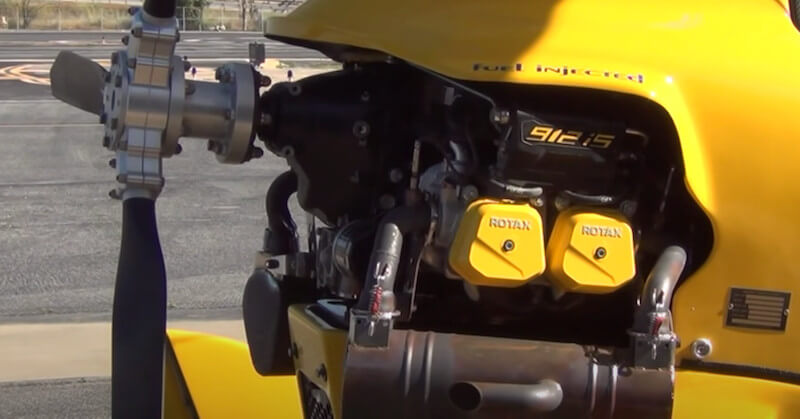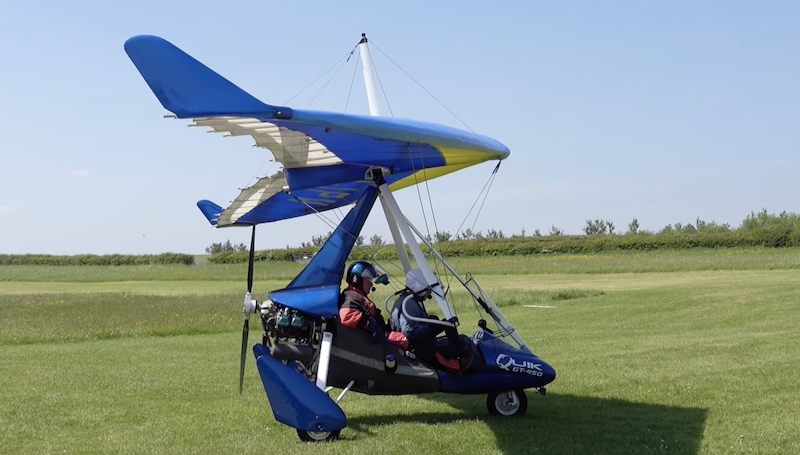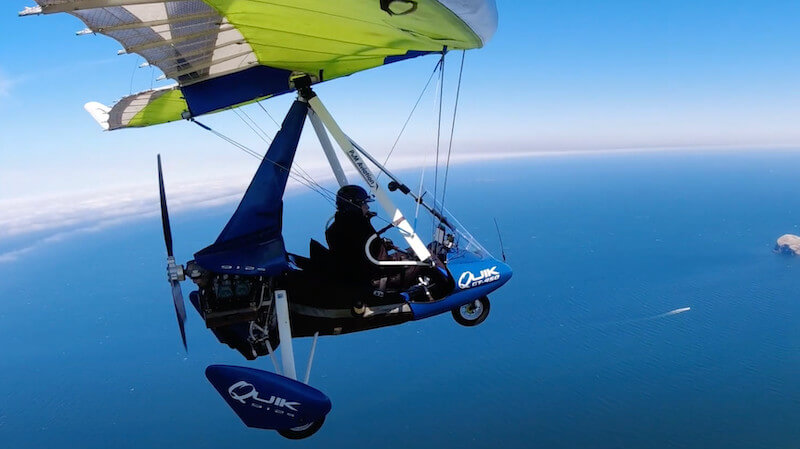Soaring above the majestic Victoria Falls, the wind rustling your hair, and viewing nature’s spectacle from a perspective few ever experience – does that sound like an adventure you’re up for? Welcome to the world of microlight flying, one of the most thrilling activities in Victoria Falls. But before you take on this exhilarating escapade, it’s crucial to know that safety is as paramount as the joy of flying.
In this post, we’ll navigate through essential microlight flying safety tips to guide you through a safe and unforgettable airborne journey over Africa’s Eden.
Key Takeaways
When it comes to flying a microlight aircraft, safety should always be a top priority. Here are some key tips to keep in mind:
- A thorough preflight inspection should be carried out before takeoff. This ensures your aircraft is in proper working order.
- Follow recommended fuel and oil recommendations for the aircraft engine.
- Use appropriate communication systems while flying to maintain contact with pilot / passenger.
- Install strobe lights on your microlight to make yourself visible to others.
- Ensure that you are following relevant regulations specific to ultralight/microlight operation while flying.
- It is crucial to find an experienced and well-trained instructor who can guide you in learning how to fly safely and properly.
- Always fly within the limits of your microlight aircraft and avoid pushing it beyond its capabilities.

By following these tips, you’ll increase your chances of having a safe and enjoyable flight experience.
Navigating Microlight Regulations
Microlight or ultralight aircraft are subject to a set of safety regulations that vary by region. Before embarking on a flying adventure, it is crucial to familiarise yourself with the rules and restrictions in your area.
For example, while most jurisdictions restrict all ultralight/microlight operations to those which are “operated by visual reference with the surface,” some countries such as Australia require pilots to have a private pilot licence or recreational pilot certificate to fly microlights. In contrast, the United States allows individuals to fly ultralights without any licence or certification.
These varying regulations are in place to ensure safe flying practises and help prevent accidents. It’s always better to err on the side of caution and comply with local laws and regulations, even if they seem overly cautious or restrictive.
For instance, in New Zealand, there are specific rules for ultralight/microlight operations at Queenstown Airport due to its proximity to a commercial airport. Pilots must follow strict procedures for entering and exiting the airspace and avoid overflying the town itself.
Rest assured, here in Victoria Falls, we follow and comply with the country’s microlight flying regulations. Should you want a microlight flight in Victoria Falls and have any questions on the matter, we will provide you with all the answers for peace of mind!
Importance of Pilot Training
- Research by “Flyer” Magazine indicated that pilot error was responsible for roughly 70% of serious microlight/ultralight accidents. Therefore, making proper training very essential as suggested by various aviation authorities.
Understanding the Laws of Ultralight Aircrafts
Ultralight aircraft come in two types: fixed-wing or flexwing. While there isn’t a universally accepted definition of an ultralight/microlight aircraft, they typically have a takeoff mass not exceeding 454 kg/1000 lbs.To operate an ultralight/microlight aircraft safely, it’s crucial to understand relevant laws and guidelines. In most jurisdictions, there are restrictions on how, when, and where they may be operated.
For instance, ultralight vehicles must only be operated between sunrise and sunset unless equipped with operational anti-collision lights visible for at least 3 sm and remain outside controlled airspace.

Additionally, ultralight/microlight pilots must be aware of relevant NOTAMs (Notice to Airmen) detailing temporary airspace access restrictions. This information should always be checked before flying to ensure safety during the flight.
Operating an ultralight/microlight aircraft without proper knowledge of the laws and regulations is like driving a car without a licence – not only is it illegal, but it can also be incredibly dangerous. By taking the time to learn these laws and guidelines, pilots can operate their aircraft safely and confidently while avoiding potential accidents or violations.
In addition to rules related to takeoff and landing times and equipment requirements, most jurisdictions also have right-of-way rules that should be followed diligently to avoid hazardous situations. Pilots should take the time to familiarise themselves with these rules as they play a vital role in ensuring safe flying practises.
While some may view these regulations as overly restrictive, they’re ultimately designed to keep pilots and others on the ground safe from accidents. Complying with these regulations is crucial, even if it adds some additional steps or requirements to your pre-flight routine.
Pre-Flight Check and Safety Equipment
One of the most critical aspects of staying safe while flying a microlight aircraft is conducting a thorough pre-flight check before takeoff. No matter how confident you are in your piloting abilities, skipping over even a single safety inspection step can lead to disaster. Remember that you’re not just examining an aircraft for your own safety, but also for the lives of anyone who may be flying with you or others on the ground.
Anecdotal evidence shows how important it is to conduct pre-flight inspections. For instance, a pilot once reported a harrowing experience where one small hose clamp came loose during flight because they hadn’t checked it properly before takeoff. The outcome was a complete engine shutdown while still in the air. The pilot luckily made an emergency landing in a field without injuring themselves or their passenger, but they could have avoided such an experience if they had taken the time to inspect everything thoroughly.
Before taking off, ensure that every part of your ultralight aircraft is functioning correctly. Carefully inspect the engine, electrical system, fuel levels and lines, wings, fuselage components and anything else specified by your aircraft’s operation manual. Make sure that all nuts and bolts are securely tightened and that cables and wiring are properly connected.
Think of pre-flight check as analogous to going through airport security before boarding a commercial flight. Just as security checks help identify any safety hazards before passengers board the plane, careful pre-flight checks can identify any potential problems with the aircraft before takeoff.
Key Items to Inspect before Takeoff
The following key items must always be carefully scrutinised during pre-flight inspections:
- Aircraft controls – Ensure that all levers, pedals, and buttons are secure and function correctly.
- Brakes – Check for proper brake performance. Ensure that the brake lines are in good condition and that there is adequate brake fluid.
- Fuselage – Inspect for any signs of damage or corrosion.
- Fuel system – Check fuel levels, fuel philtres, and fuel tank vents to prevent contamination.
- Ignition system – Test the ignition switch and check for proper spark plug operation
- Instrument panel- Verify that the instruments readings are accurate and responsive.
A faulty fuel gauge led to a fatal crash of a microlight aircraft some years ago. The pilot believed they had enough fuel for two hours of flight, only to have run out at 1 hour 20 minutes into the journey. They crashed in a remote area and died before rescue arrived. A thorough pre-flight checking process should’ve picked up on this issue, thus avoiding this tragedy.
To ensure your Microlight is safe to fly, consult your aircraft’s operational manual whenever possible. While conducting preflight checks, keep in mind what you may learn during your ground course or instructions as well about ideal safety practises. Some manuals give recommended inspection guides such as suggested torque settings for each bolt size and best practises for inspecting cables and fluids.

Some people might claim that checking all these parts will take too much time or seems like overkill. It’s important to remember that safety must come first, even if it takes extra time. Checking everything beforehand could save your life, and possibly even someone else’s life. If you genuinely don’t have time to conduct full checks or lack knowledge on how to go about it, consider asking a friend who has the skills or hiring an expert mechanic to assist.
Remember that when it comes to flying microlights, safety must always be paramount. You must ensure that both your equipment and environment are conducive and optimal for flying before takeoff. In the next sections, we’ll go through some important tips to consider when in the air.
Flight Conduct and Risk Management
Microlight flying may seem like an exhilarating activity with little to no risks, but it’s important to understand that even the slightest mistake could result in serious injuries or fatalities. That’s why it’s crucial to follow proper flight conduct and risk management protocols.
One of the most important things to consider when flying a microlight aircraft is weather conditions. Before taking off, ensure that you check forecasts and plan your route accordingly. The wind, visibility, and temperature are all factors you should account for since they affect the aircraft’s performance. If the weather conditions pose a danger or challenge, it’s best to postpone your flight.
Another risk factor to consider is airspace congestion. You need to be aware of other aircraft and their projected flight paths to avoid dangerous encounters. Using an appropriate communication system and adhering to right-of-way rules will help minimise potential hazards.
Moreover, remember that flying comes with certain responsibilities that must not be ignored. Those who fly in populated areas must make sure they are not disturbing people with their noise or endangering their safety by flying too low. Flying over private property also requires permission from landowners.
A few years ago, a microlight pilot caused chaos after crashing into a nearby office building while trying to evade birds in the sky. According to reports, the pilot made some poor decisions during flight conduct that led up to the incident. This incident highlights the importance of being aware of your surroundings and maintaining control of your aircraft during flight.
Adhering to these guidelines helps mitigate risk factors associated with microlight flying significantly. As long as you are cautious about weather conditions, airspace congestion, and your responsibilities towards others on the ground or in other aircraft, you can reduce the chances of accidents occurring drastically.
Awareness and Precautions during Flight
As any experienced microlight pilot will tell you, flying an aircraft requires a high level of situational awareness. By maintaining vigilance – meaning staying alert and aware of the world around you at all times – you’re effectively reducing potential risks.
One critical aspect of situational awareness is being attentive to your aircraft’s instrumentation systems. These systems give pilots information about their aircraft’s performance, making it easier for them to detect any problems or risks and take corrective actions accordingly. If any changes in performance occur during flight, keep calm and act promptly.
Being mindful of other factors while flying is also important. One example would be paying attention to terrain features such as buildings, power lines, and trees. These elements could impact the flight path or altitude required for safe operations. Hence, identifying them early on and knowing how to work around them is essential.
Another crucial factor is fuel management. Knowing your aircraft’s fuel consumption rate and monitoring levels during flight could prevent unexpected engine shutdowns or flameouts.
Consider how a captain navigates a ship through hazardous waters by studying maps, calculating speed and depth. Similarly, a microlight pilot uses instrumentation systems and situational awareness skills to stay alert and minimise potential risk factors during flight.
Maintaining situational awareness throughout the duration of your flight can significantly reduce the chances of accidents occurring, ultimately ensuring a safer journey for yourself and others in the sky.
Emergency Procedures and Training
Safety in flying is achieved not only through preventive measures but also with emergency preparedness. As a microlight pilot, you must learn how to handle various emergency situations such as engine failure or loss of control, which can occur during flight. In such emergencies, it is essential that you remain calm, focused, and prepared to respond quickly.
One crucial aspect of emergency training involves conducting emergency drills and procedures before taking off. This includes practising emergency landing procedures and equipping your aircraft with relevant safety equipment such as fire extinguishers, first aid kits, and parachutes. Proper training helps you understand the best ways to deal with unexpected situations in the air.
Another important aspect of emergency preparedness is maintaining good communication skills. Microlight pilots should have working communication systems that allow for easy contact with relevant parties in cases of emergency situations. Knowing how to communicate distress signals to ATC or ground personnel can mean the difference between life and death in certain situations.
For instance, a pilot who had his ultralight’s engine quit on him was able to send an SOS signal via satellite phone mounted on his dashboard. The distress call reached the appropriate authorities, who were able to locate him immediately thanks to his precise report on his location.
It is also important to prioritise the safety of everyone around you when handling emergencies. Making an abrupt descent in a densely populated area could endanger people on the ground; thus, seeking an open space is critical in such circumstances.
By adhering to established safety protocols before takeoff and remaining calm throughout any incident or failures that may occur while aloft, piloting a microlight aircraft can be enjoyable without risk-taking behaviours.
Coping with Aerodynamic and Engine Failures
Aerodynamic failure refers to any occurrence where your microlight aircraft loses lift power entirely or partially resulting from bad weather conditions, losing control of the aircraft, or equipment failure. A pilot should know how to navigate changing weather conditions while replacing poor equipment before departure. Engine failure can occur due to various reasons like insufficient fuel or oil, ignition problems, and overload. It is essential to remain alert in-flight while keeping an eye out for warning signs like vibrations, decreasing power, or engine sounds.
Checking your fuel gauge regularly during flight is another way to prepare for possible occurrences leading to engine failure. Additionally, considering the weight capacity of your microlight aircraft before taking off prevents overloading that could weigh your aircraft down or put undue stress on the mechanical parts.
Proper training in practising landing techniques ensures that you can quickly make a safe landing even if an emergency arises. In this scenario, a well-trained microlight pilot still flying under visual reference regulations was able to immediately identify a flat field where he made an expert landing after his aircraft’s engine failed mid-flight.
It is also essential to understand the effects of wind turbulence on flight, which can lead to aerodynamic-related emergencies. Knowing how mountains and other obstacles affect wind patterns significantly helps pilots plan their route better and avoid areas with more instances of turbulence.
When altitude loss does occur due to any of these situations, maintaining composure and operating the glider controls best practises to ensure a safe glide path is maintained. Some pilots indeed become disoriented after experiencing abnormal aerodynamic conditions during flight. While it may be tempting to eject from the cockpit in such circumstances, one must remain calm and act thoughtfully with their options.
By following safety protocols and seeking extra training opportunities that provide knowledge on coping with emergencies that arise during flights, you’ll have more confidence when piloting your microlight aircraft. Flying will no longer feel like a dangerous endeavour but an enjoyable hobby – even amidst wild weather changes and unexpected interruptions.
Conclusion
In addition to exploring the perspective of pilots and their safety tips, it is valuable for passengers to comprehend the safety checks and procedures carried out by pilots. While pilots bear the primary responsibility for flight safety, passengers can enhance their own experience and peace of mind by familiarising themselves with these essential safety measures.
When preparing to board a microlight aircraft, passengers should appreciate the significance of the safety checks conducted by the pilot. These checks involve thorough pre-flight inspections to ensure the aircraft is in proper working condition. Passengers can benefit from understanding that these inspections encompass elements such as examining the engine, control surfaces, fuel systems, and other critical components. By being aware of these safety measures, passengers can gain confidence in the aircraft’s reliability and the pilot’s commitment to their safety and enjoy their experience in peace of mind!
If you are interested in experiencing the breathtaking beauty of the waterfall from the air and have any questions or concerns, feel free to reach out to us through our convenient quick messaging system located on the right sidebar! Our team is dedicated to assisting you and providing information regarding safety measures and compliance in microlight flying.
